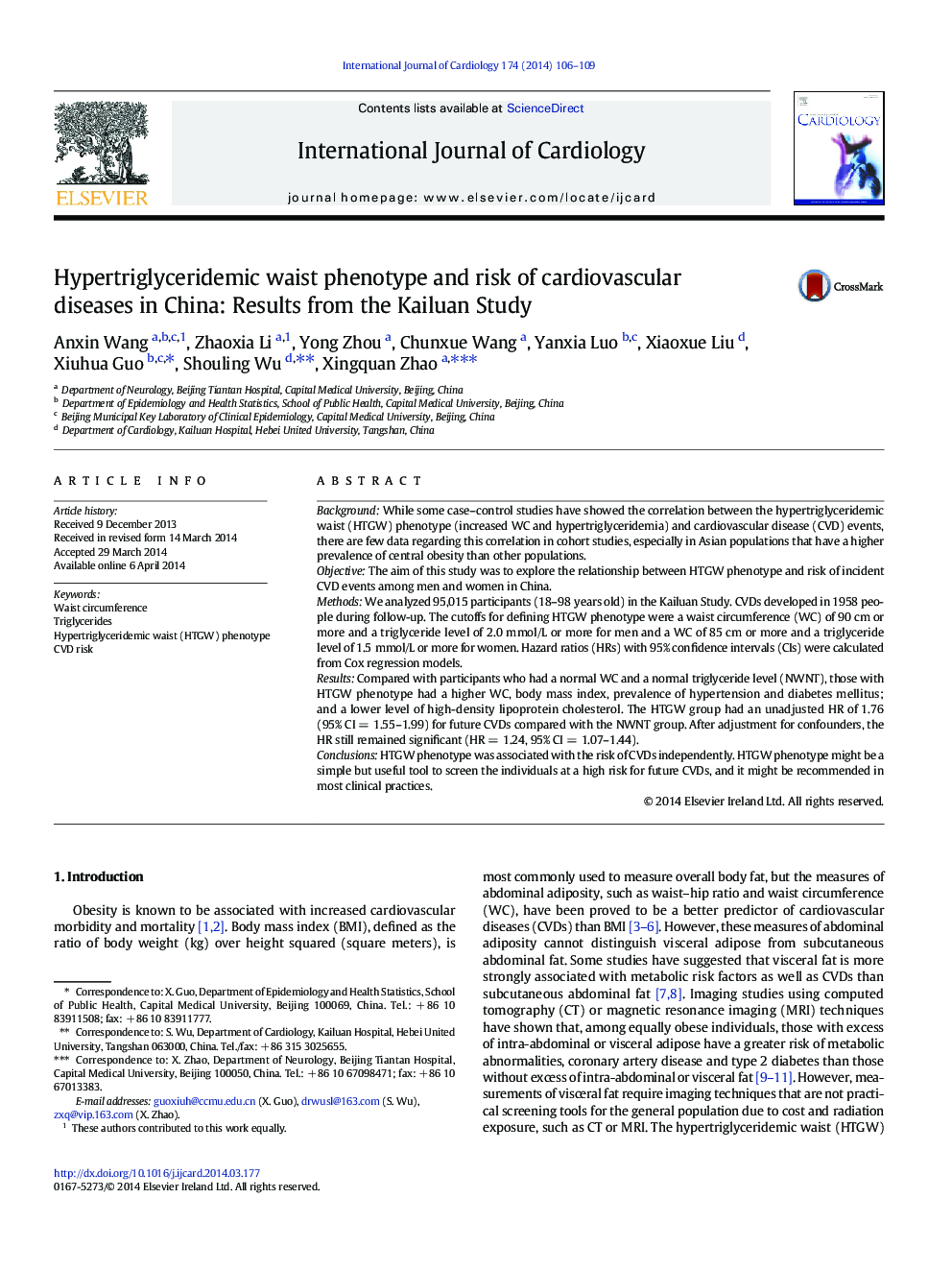| کد مقاله | کد نشریه | سال انتشار | مقاله انگلیسی | نسخه تمام متن |
|---|---|---|---|---|
| 5971361 | 1576186 | 2014 | 4 صفحه PDF | دانلود رایگان |

BackgroundWhile some case-control studies have showed the correlation between the hypertriglyceridemic waist (HTGW) phenotype (increased WC and hypertriglyceridemia) and cardiovascular disease (CVD) events, there are few data regarding this correlation in cohort studies, especially in Asian populations that have a higher prevalence of central obesity than other populations.ObjectiveThe aim of this study was to explore the relationship between HTGW phenotype and risk of incident CVD events among men and women in China.MethodsWe analyzed 95,015 participants (18-98Â years old) in the Kailuan Study. CVDs developed in 1958 people during follow-up. The cutoffs for defining HTGW phenotype were a waist circumference (WC) of 90Â cm or more and a triglyceride level of 2.0Â mmol/L or more for men and a WC of 85Â cm or more and a triglyceride level of 1.5Â mmol/L or more for women. Hazard ratios (HRs) with 95% confidence intervals (CIs) were calculated from Cox regression models.ResultsCompared with participants who had a normal WC and a normal triglyceride level (NWNT), those with HTGW phenotype had a higher WC, body mass index, prevalence of hypertension and diabetes mellitus; and a lower level of high-density lipoprotein cholesterol. The HTGW group had an unadjusted HR of 1.76 (95% CIÂ =Â 1.55-1.99) for future CVDs compared with the NWNT group. After adjustment for confounders, the HR still remained significant (HRÂ =Â 1.24, 95% CIÂ =Â 1.07-1.44).ConclusionsHTGW phenotype was associated with the risk of CVDs independently. HTGW phenotype might be a simple but useful tool to screen the individuals at a high risk for future CVDs, and it might be recommended in most clinical practices.
Journal: International Journal of Cardiology - Volume 174, Issue 1, 1 June 2014, Pages 106-109